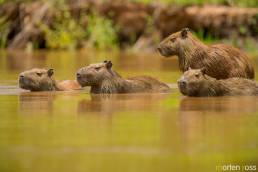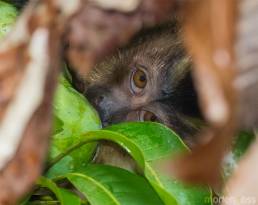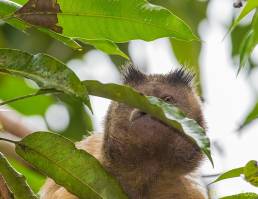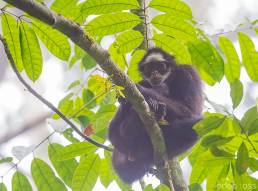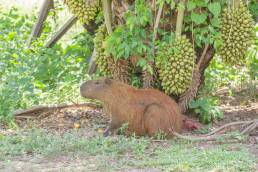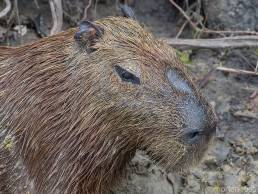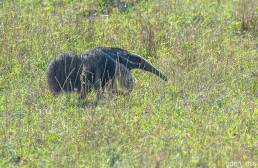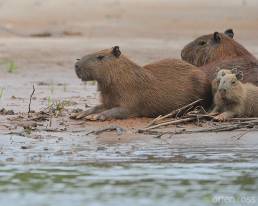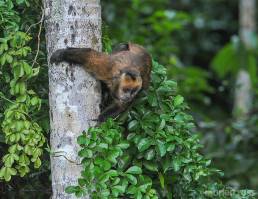28 Nov 2014
Capybara (Hydrochoerus hydrochaeris)
It's midday and it scorching hot, so what's better than simply standing in the river? You can see from the absence of ripples that they have been standing…
27 Nov 2014
Capybara (Hydrochoerus hydrochaeris)
These giant rodents are perhaps the most photographed of all animals of the Pantanal, but most are from afar and generic. I find these animals truly amazing…
18 Nov 2013
Tufted capuchin (Cebus apella)
This group of tufted capuchin (Cebus apella) raided the mango trees like there was no tomorrow!
18 Nov 2013
Tufted capuchin (Cebus apella)
In this angle I think the name tufted is appropriate, but it's more commonly known as the brown capuchin. This tufted capuchin (Cebus apella) is naturally part…
18 Nov 2013
White-whiskered Spider Monkey (Ateles marginatus)
A group of spider monkeys was accompanying a group of capuchin monkeys. While the capuchins were busy raiding the mango trees in the garden of Cristalino…
15 Nov 2013
Capybara (Hydrochoerus hydrochaeris)
The fruit of the Acuri palm (Attalea phalerata) is important food for a number of Pantanal bird and mammal species, and here one adult capybara (Hydrochoerus…
11 Nov 2013
Capybara (Hydrochoerus hydrochaeris)
In Pantanal some groups of capybaras are almost tame, and this one was no exception, as it seemingly regarded my passing as the river itself. This is not the…
11 Nov 2013
Giant Anteater (Myrmecophaga tridactyla)
The Giant Anteater is threatened and thus not common to see - even in Pantanal. I was really grateful to see it the very first morning of my stay, and hoped to…
23 Nov 2012
Capybara (Hydrochoerus hydrochaeris)
A very common mammal, and perhaps the most abundant in Madidi. My trip out of Madidid provided the most sightings, and several resting as seen here.
